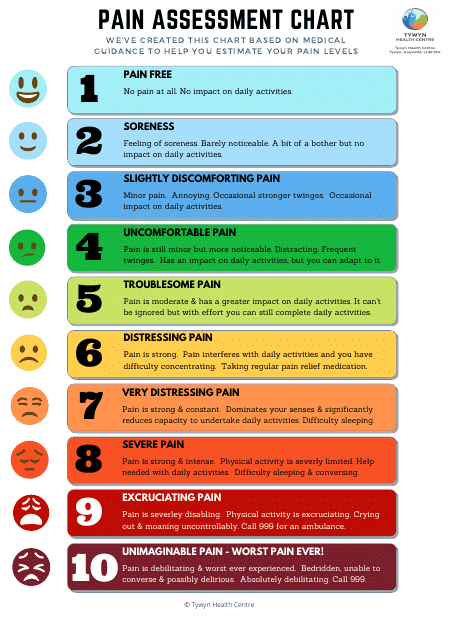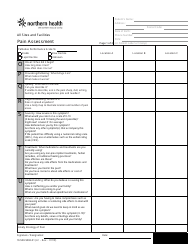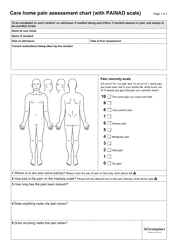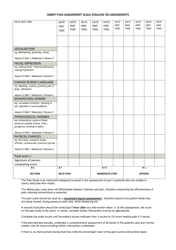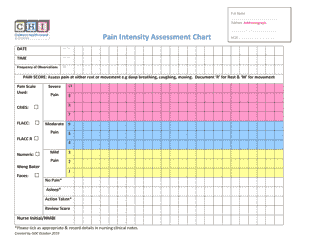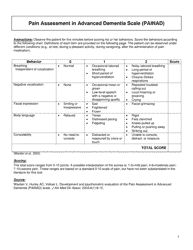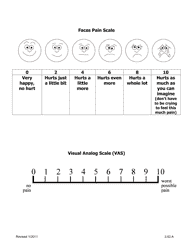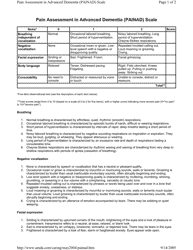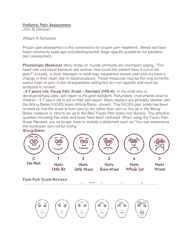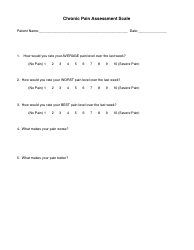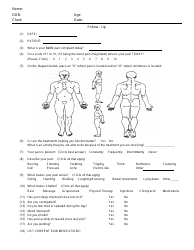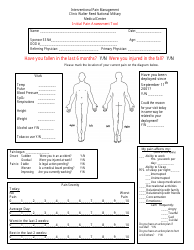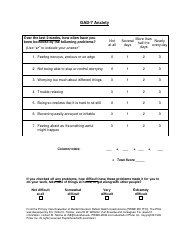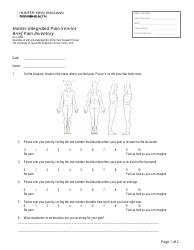Pain Assessment Chart
A Pain Assessment Chart is a tool used by healthcare professionals to identify and monitor a patient's level of pain. It's designed to help patients express the severity of their pain more accurately. This can include numerical scales (like 0-10), visual analog scales, or even illustrations of body parts where patients can point out where they're feeling pain. These charts are crucial for determining the effectiveness of pain management strategies and adjustments in treatment if necessary.
The Pain Assessment Chart is typically filed by a healthcare provider such as a nurse or doctor. These professionals use the chart to assess and document a patient's level of pain. The chart helps in tracking the progress of a patient's pain level over time and the effectiveness of the pain management strategies being used. This document is common in many countries including the USA, Canada, India, and Australia.
FAQ
Q: What is a Pain Assessment Chart?
A: A Pain Assessment Chart is a tool used by healthcare professionals to measure and record a patient's level of pain. It typically involves a scale ranging from 0 (no pain) to 10 (worst pain imaginable), allowing patients to accurately communicate their pain level to healthcare providers.
Q: Why is a Pain Assessment Chart important?
A: A Pain Assessment Chart is important because pain is subjective and can be difficult to quantify. This chart provides a standardized method for evaluating and documenting a patient's pain, allowing for more effective management and treatment of pain.
Q: How to use a Pain Assessment Chart?
A: To use a Pain Assessment Chart, a patient is asked to indicate their level of pain on a scale from 0 to 10. A score of 0 indicates no pain, while a score of 10 signifies the worst pain imaginable. This score is then recorded and used as a benchmark for evaluating the effectiveness of pain treatments.
Q: Is the use of the Pain Assessment Chart common in the USA?
A: Yes, the use of the Pain Assessment Chart is common in the USA. It's used in various healthcare settings, including hospitals, clinics, and doctors' offices, to evaluate and manage patient pain levels.
Q: Who can use the Pain Assessment Chart?
A: The Pain Assessment Chart can be used by healthcare professionals, including doctors, nurses, and physiotherapists. In some situations, patients and caregivers may also be trained to use the chart in a home setting to monitor pain levels.
Q: Are there different types of Pain Assessment Charts?
A: Yes, there are several types of Pain Assessment Charts, including numerical rating scales, visual analogue scales, and the Wong-Baker FACES® Pain Rating Scale which is often used for children. The choice of scale can depend on the patient's age, cognitive status, and personal preference.
Q: How reliable is a Pain Assessment Chart?
A: Due to subjective nature of pain, individual assessments can vary. However, Pain Assessment Charts are generally considered reliable when used consistently and accurately. They are suitable tools for providing a quantitative measure of a patient’s pain that can be tracked over time.
